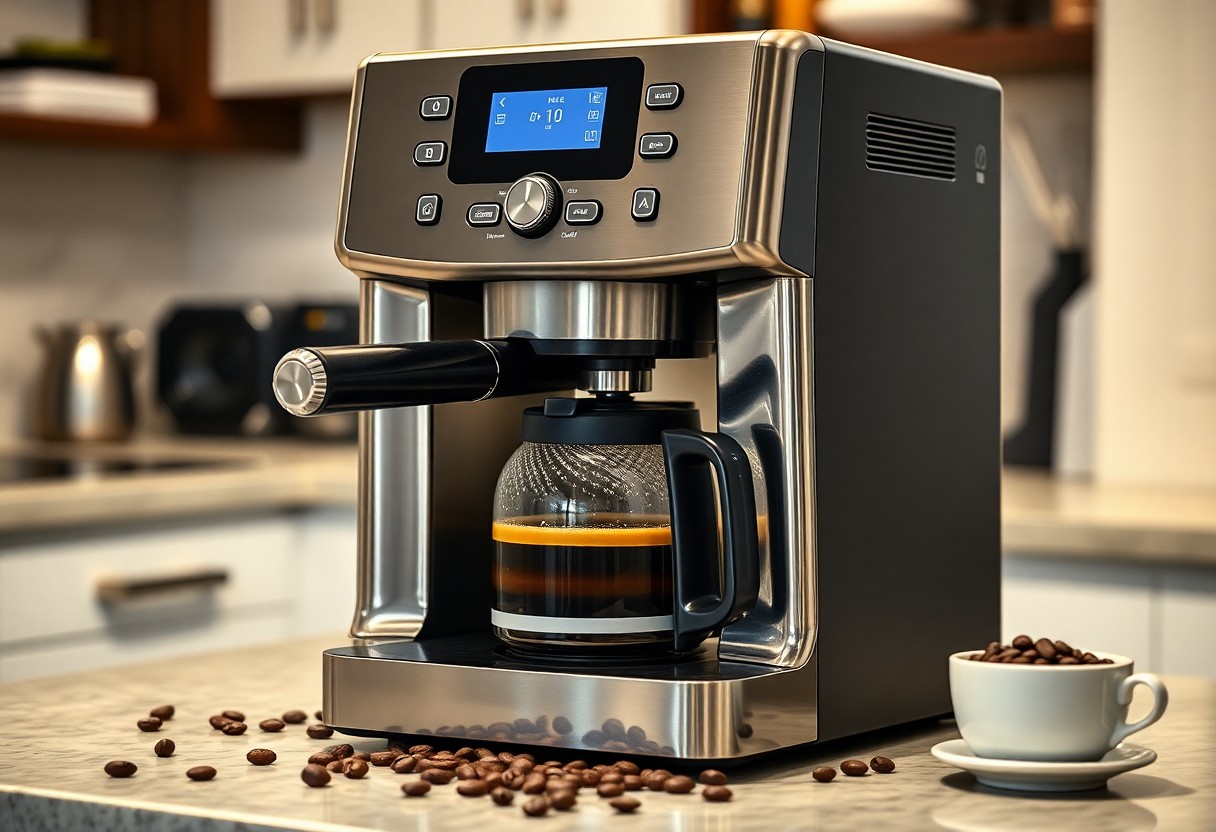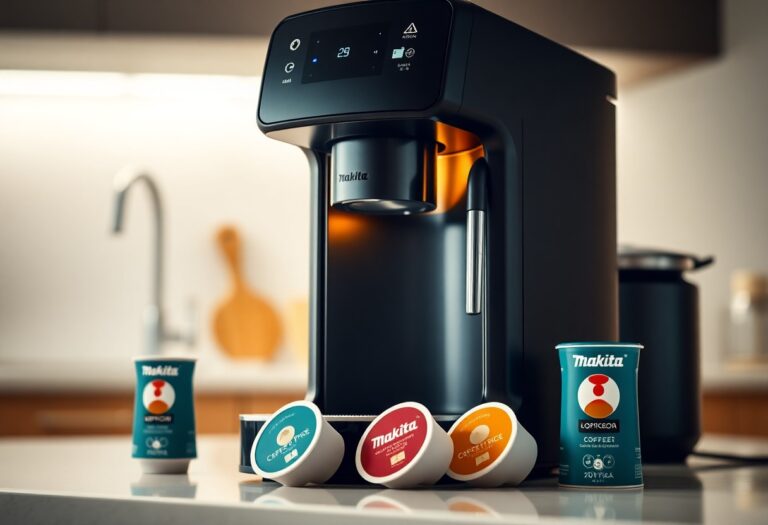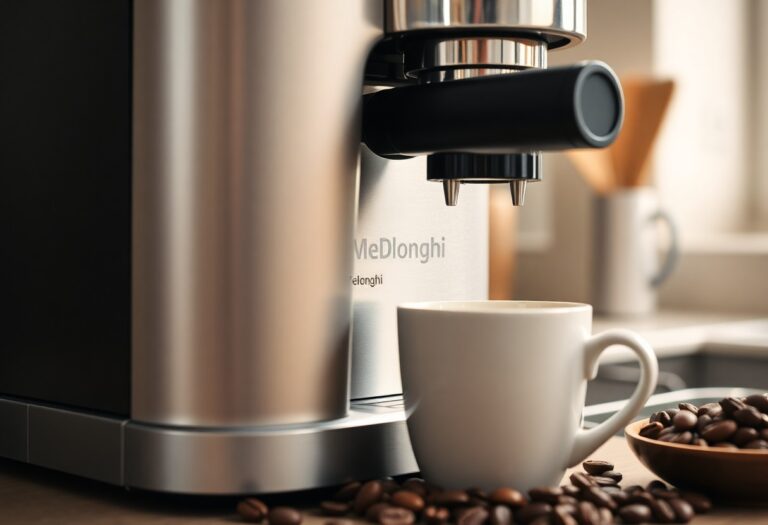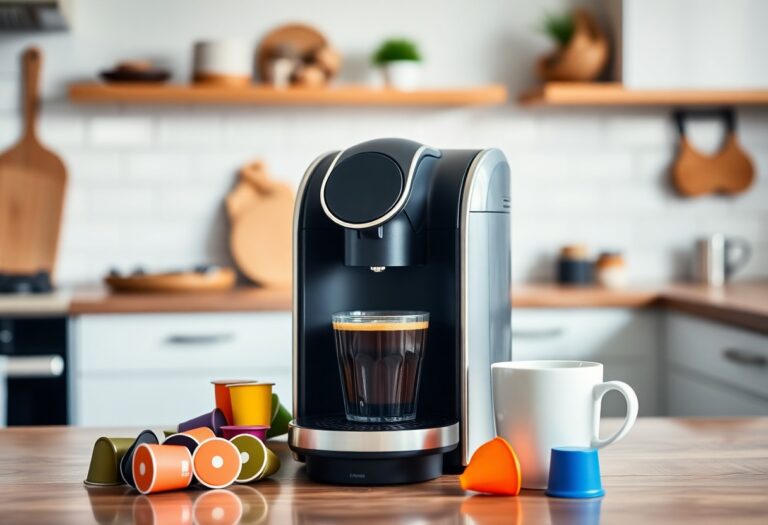What is the Coffee Machine – General Definition
Most of you enjoy a good cup of coffee, and understanding the coffee machine can enhance your brewing experience. A coffee machine is an appliance designed to brew coffee by heating water and forcing it through coffee grounds, extracting flavors and aromas. Your choice of coffee machine can significantly impact the taste and quality of your brew, as well as convenience. For a detailed overview of this vital appliance, you can check out this Coffeemaker article, which explores various types and features available.
Key Takeaways:
- A coffee machine is an appliance designed to brew coffee, commonly using methods like drip, espresso, or capsule brewing.
- Different types of coffee machines cater to various brewing preferences, producing everything from specialty coffees to basic filtered coffee.
- Most coffee machines consist of key components such as a water reservoir, heating element, and a brewing chamber.
- Modern coffee machines may include features like programmable settings, built-in grinders, and milk frothers for enhanced convenience and versatility.
- Efficient operation and ease of use are significant factors in the popularity of various coffee machine models among different consumer groups.
The Anatomy of a Coffee Machine
An exploration of the coffee machine unveils a carefully designed structure comprised of various components, each serving a distinct purpose. Understanding these parts enhances your appreciation for coffee brewing and might inspire you to explore different brewing techniques. To optimize your coffee experience, it’s imperative to recognize how each element works together to produce that delightful cup of coffee.
Key Components and Their Functions
A coffee machine incorporates several key components: the water reservoir, which holds the water before it’s heated; the heating element, that warms the water to the optimal brewing temperature; and the brew basket, where coffee grounds are placed for extraction. Additionally, the carafe collects the brewed coffee, whilst the control panel allows you to customize your brewing process.
How Each Part Contributes to the Brewing Process
Every part of the coffee machine plays a pivotal role in crafting your perfect brew. The water reservoir fills the space with fresh water, which the heating element heats to between 195°F and 205°F—ideal for extracting flavors. The brew basket ensures the even distribution of water over the coffee grounds, optimizing extraction time. After brewing, the carafe holds the hot beverage, keeping it ready for your enjoyment. Together, each component synchronizes to produce a harmonious cup of coffee.
For instance, the engineering behind the heating element is designed to deliver optimal water temperature quickly while preventing overheating, which can result in bitter flavors. The brew basket’s design promotes a uniform water flow that saturates the coffee grounds consistently, enhancing flavor extraction. As the brewed coffee flows into the carafe, some machines include warming plates that maintain the coffee’s temperature, ensuring every sip remains delightful. Thus, the anatomy of your coffee machine is not just a collection of parts but a well-orchestrated system that creates a beverage you love to start your day with.
Brewing Methods: A Coffee Machine’s Impact on Flavor
Your choice of brewing method significantly influences the flavor profile of your coffee. Different machines and techniques extract flavors from the coffee grounds uniquely, allowing for a diverse experience for each cup. For instance, an espresso machine uses high pressure to force water through finely ground coffee, yielding a concentrated shot with rich crema, while a drip coffee maker utilizes gravity to brew a more diluted yet aromatic beverage. Each method’s specific parameters affect the overall taste, giving you the opportunity to explore various flavor nuances.
The Science of Extraction and Its Role in Taste
Extraction is the process wherein water interacts with coffee grounds to draw out flavors, oils, and caffeine. The ideal extraction occurs within a specific time frame and temperature range. If water is too hot or in contact for too long, bitter compounds can seep into your cup. Conversely, under-extraction can lead to sour, weak coffee. Understanding the science behind extraction allows you to tweak your brewing method for a well-balanced flavor that suits your palate perfectly.
Comparisons Between Different Brewing Techniques
Various brewing techniques create distinct flavor profiles, each with its unique characteristics. For example, methods such as pour-over yield a cleaner taste by allowing for greater control over extraction time, while French press produces a fuller body due to the coffee’s immersion in water. Below is an overview of how different brewing techniques compare regarding flavor extraction:
| Technique | Flavor Profile |
| Espresso | Rich, intense with a thick crema |
| Pour-Over | Crisp, clean, with nuanced flavors |
| French Press | Full-bodied, robust, and oily |
| Cold Brew | Smooth, mellow, and less acidic |
Exploring the variations in brewing techniques opens up a world of flavor possibilities. The espresso method, known for emphasizing the boldness and crema, stands in stark contrast to the lighter, more transparent flavors of pour-over. French press enthusiasts often enjoy a richer experience, thanks to the grounds’ direct immersion. In cold brew, low acidity brings out the coffee’s sweeter notes, a completely different take on your morning ritual. Ultimately, experimenting with various techniques enables you to discover your favorite flavor profiles.
| Exploration | Flavor Enhancement |
| Espresso | Focus on high-pressure extraction, highlighting robust flavors |
| Pour-Over | Involves precise pouring, which can bring subtle notes forward |
| French Press | Rich oils and fine particles contribute to a smooth, thick mouthfeel |
| Cold Brew | Long steeping time enhances sweetness, perfect for warm weather |
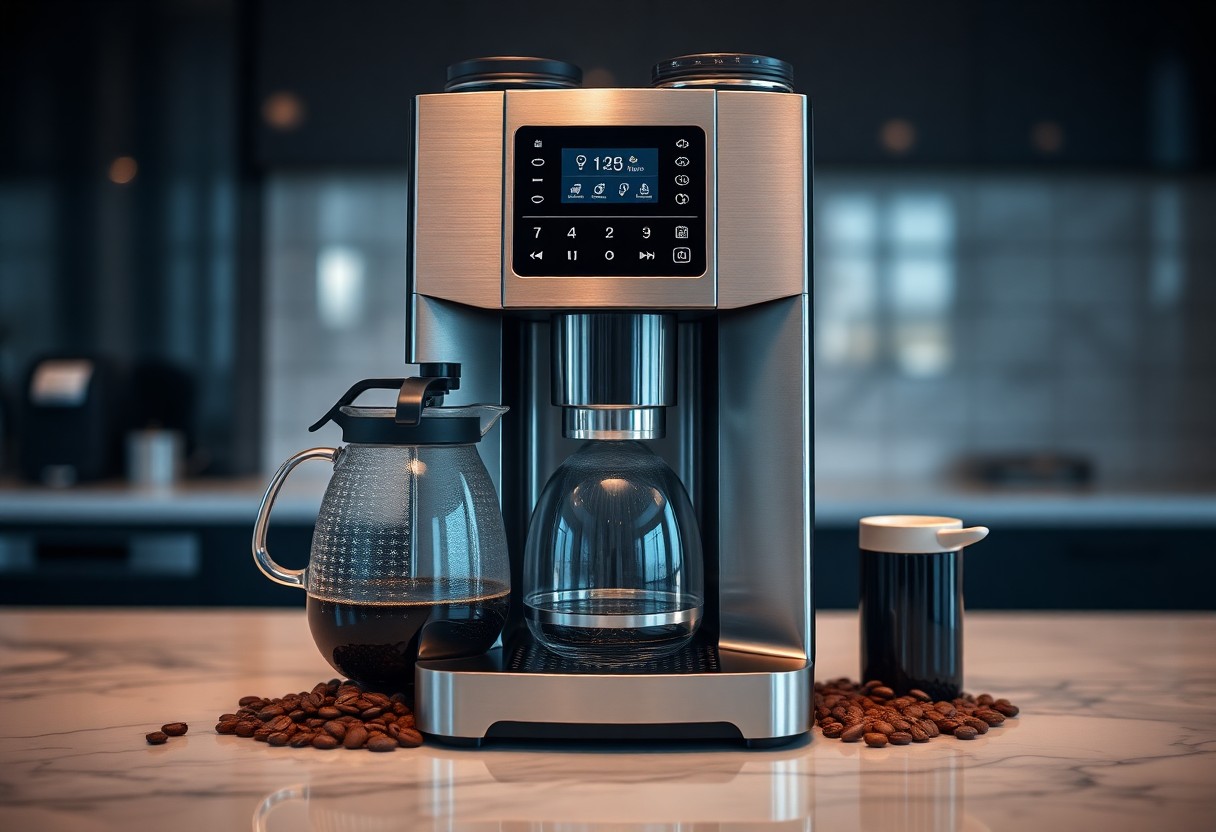
The Evolution of Coffee Machines: Past to Present
The story of coffee machines is one of remarkable innovation, tracing back to humble beginnings such as the simple pot over an open flame. As brewing methodologies evolved, so did the technology. Early coffee machines featured basic drip mechanisms, but modern designs incorporate advanced programmable features. These advancements have not only made brewing more efficient but also more accessible, allowing you to enjoy gourmet coffee at home with a touch of a button.
Historical Development and Technological Advancements
Over time, coffee machines have transitioned from manual brewing methods to sophisticated, automated systems. The invention of the espresso machine in the early 20th century revolutionized the coffee landscape, introducing pressurized brewing. Further innovations included the introduction of thermal carafes, single-serve pod systems, and smart coffee makers that connect to your smartphone. These technological advancements have made coffee preparation faster, cleaner, and customizable to suit your taste.
How Consumer Preferences Have Shaped Design
Your preferences have significantly influenced the design of coffee machines. As users increasingly sought convenience and personalization, manufacturers responded by offering machines that cater to various brewing styles and tastes. This customization is evident in the rise of single-serve coffee makers that allow you to brew just one cup at a time, minimizing waste. Furthermore, sleek, modern aesthetics and multifunctional devices have become standard, driven by a consumer desire for both functionality and style in your kitchen.
Consumer preferences extend beyond just convenience; they also reflect the growing interest in sustainability and fair trade. Many brands now prioritize eco-friendly materials and processes, as well as offering options for ethically sourced coffee pods. You may find yourself leaning towards machines that not only brew quality coffee but also align with your values. This change drives the market towards innovations such as compostable pods and energy-efficient models, which ultimately enhance your overall coffee experience while catering to your conscious choices.
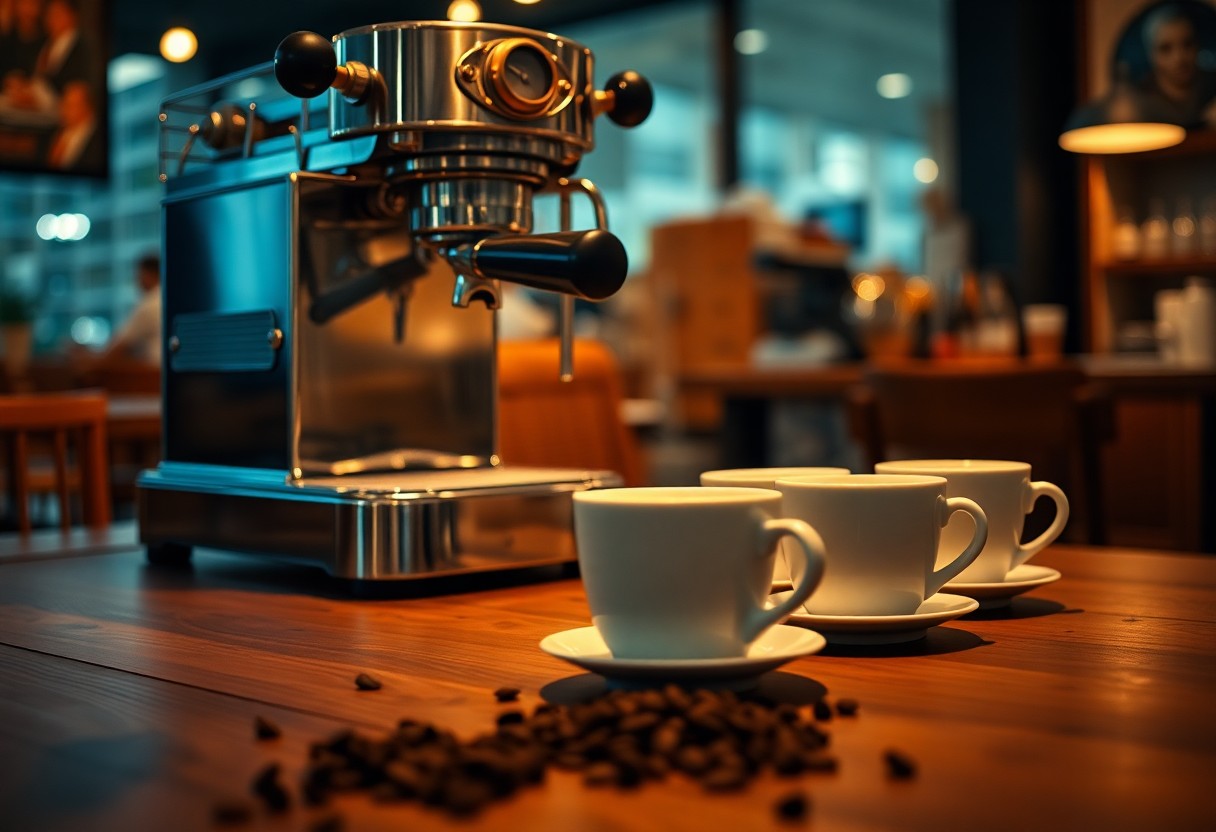
The Coffee Machine as a Cultural Icon
The coffee machine transcends its practical use, becoming a cultural icon that shapes social interactions and personal rituals. Often found at the center of homes and cafes, it serves not only as a tool for brewing coffee but also as a symbol of connection and shared experiences. The evolution of How Coffee Makers Work reflects our growing appreciation for coffee as more than a beverage.
Coffee Machines in Social Settings: Beyond Functionality
In social settings, the coffee machine creates an inviting atmosphere, encouraging conversations and connections. You’ve likely noticed how coffee breaks at work facilitate networking opportunities, or how friends gather around the coffee maker during visits. This communal aspect enhances its role, transforming simple gatherings into cherished moments that foster relationships.
The Symbolism of Coffee Culture in Different Societies
Across various cultures, coffee machines symbolize more than just a way to prepare coffee; they embody community, tradition, and the rituals inherent in connecting people. For instance, in Italy, espresso machines signify a deep appreciation for craftsmanship and social interaction, while in Scandinavian countries, sophisticated brewing gadgets reflect a minimalist lifestyle focused on quality and simplicity.
The symbolism attached to coffee culture varies widely based on social contexts and historical backgrounds. In many Mediterranean societies, coffee is intertwined with hospitality, often served to guests as a sign of respect and warmth. Meanwhile, in Japan, the meticulous preparation of coffee is akin to a meditative art form, highlighting patience and precision. In the United States, the rise of specialty coffee shops indicates a growing trend toward artisanal brewing, where the coffee machine becomes an instrument for self-expression and individual taste. Each scenario reinforces the notion that, regardless of geographical differences, coffee continues to bring people together, enriching communal life with its alluring presence.
Maintenance Matters: Keeping Your Coffee Machine in Peak Condition
Regular maintenance of your coffee machine is vital to ensure it operates efficiently and consistently brews quality coffee. Routine checks, cleaning, and part replacements enhance not only the longevity but also the performance of your machine. Ignoring maintenance can lead to diminished flavor and uneven brewing, ultimately compromising your daily coffee experience.
Common Maintenance Practices for Longevity
Implementing common maintenance practices, such as descaling every few months, cleaning the brewing components, and replacing water filters regularly, extends your coffee machine’s lifespan. Wiping down the exterior and ensuring all parts are dry and free from residue after use can prevent build-up and functional issues. Keeping an organized maintenance schedule allows you to manage these tasks effectively.
How Maintenance Affects Coffee Quality
Your coffee machine’s maintenance directly influences the quality of your morning brew. Dirty components, limescale build-up, and old filters can lead to stale-tasting coffee, as oils and residues accumulate over time. Regularly cleaning and descaling your machine ensures the pure flavors of your coffee shine through, allowing you to enjoy every sip.
For instance, a neglected coffee machine can harbor coffee oils that produce a rancid smell, resulting in a bitter taste in your cups. Additionally, mineral deposits from hard water can affect water temperature and pressure during brewing, crucial factors for proper extraction. Flushing out these impurities maximizes the richness of your coffee while showcasing its inherent flavors. Prioritizing maintenance not only keeps your machine running smoothly but also preserves the integrity of your coffee, enhancing your overall enjoyment.
Final Words
Ultimately, a coffee machine is an imperative appliance that transforms your coffee experience by brewing your favorite beverage with precision and convenience. Understanding its various types and functionalities allows you to choose one that best fits your needs, whether you prefer the rich flavor of espresso or the ease of drip coffee. By investing time in learning about your coffee machine, you can enhance your daily ritual, ensuring that every cup you enjoy is tailored to your tastes and preferences.
Q: What does a coffee machine do?
A: A coffee machine brews coffee by forcing hot water through ground coffee to extract flavors and aromas. Depending on the type of machine, it can make different coffee styles such as espresso, drip coffee, or cappuccino.
Q: What are the different types of coffee machines?
A: There are several types of coffee machines, including drip coffee makers, espresso machines, single-serve pod machines, French presses, and percolators. Each type operates differently and produces varying styles of coffee based on user preferences.
Q: How do I choose the right coffee machine for my needs?
A: To choose the right coffee machine, consider factors such as the type of coffee you enjoy, brewing capacity, ease of use, and maintenance requirements. A single-serve machine may suit individuals, while drip makers or espresso machines might be better for households and gatherings.
Q: What features should I look for in a coffee machine?
A: Key features to consider include brewing time, programmable settings, built-in grinders, water filters, and thermal carafes. Additionally, look for machines with easy cleanup, adjustable brew strength, and various brewing options to enhance versatility.
Q: How do coffee machines affect the taste of the coffee?
A: The type and quality of a coffee machine can significantly impact the taste of coffee. Machines that maintain consistent brewing temperatures and appropriate pressure (like espresso machines) typically produce better-quality coffee. Additionally, the freshness of the coffee grounds and water used also plays a role in the final flavor.

